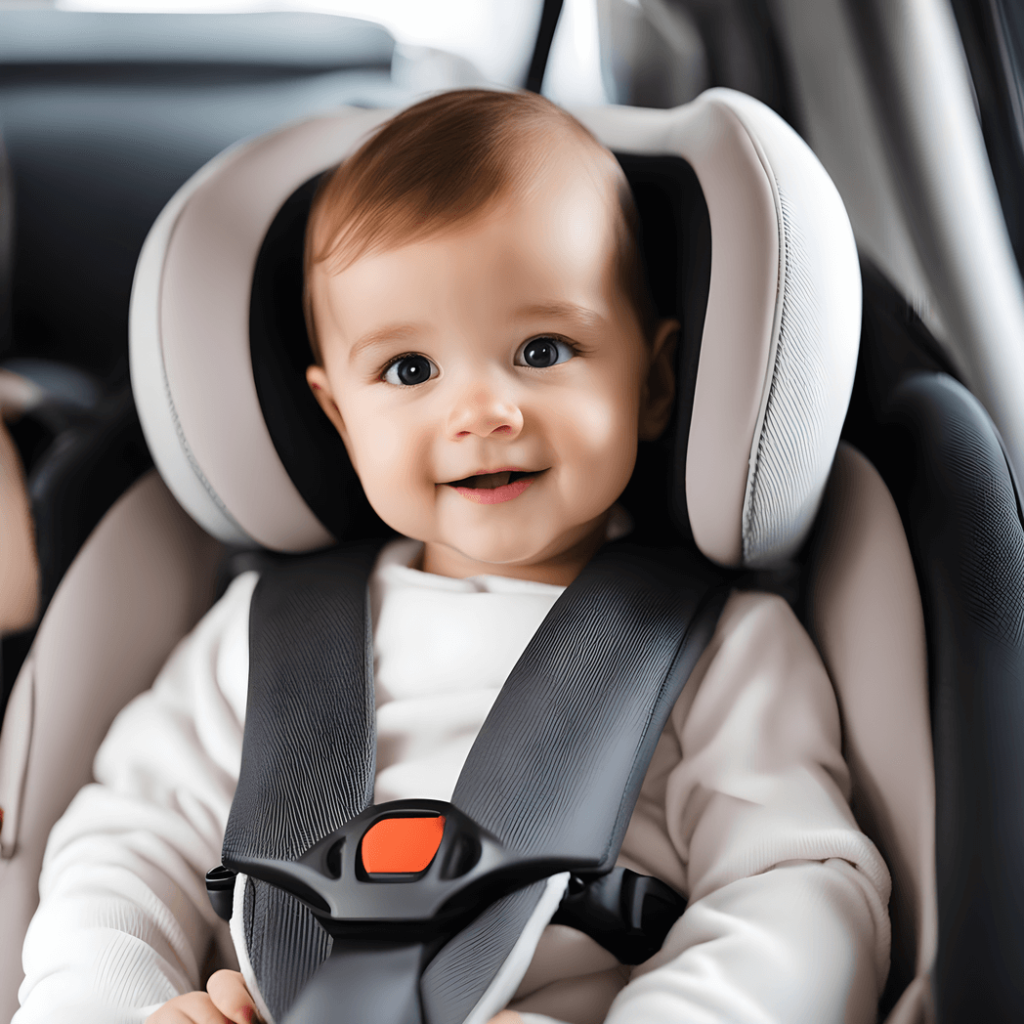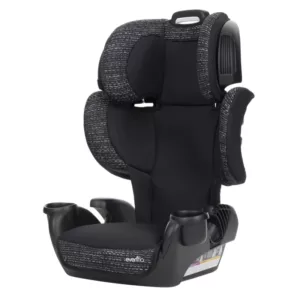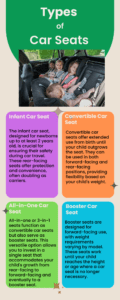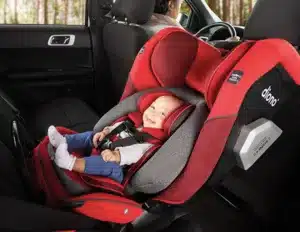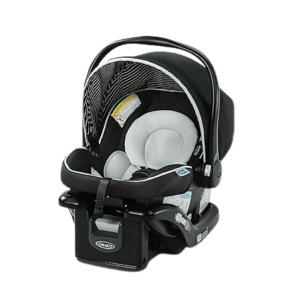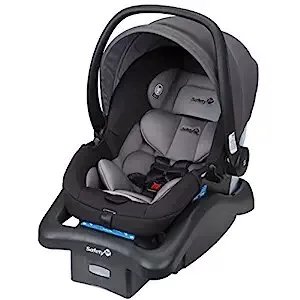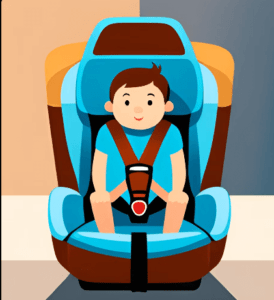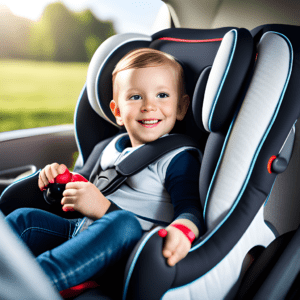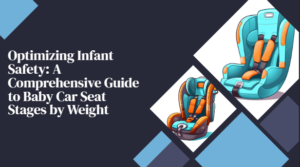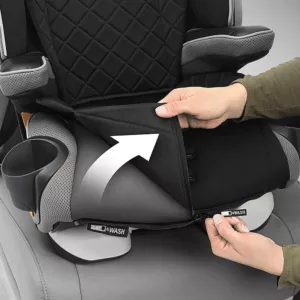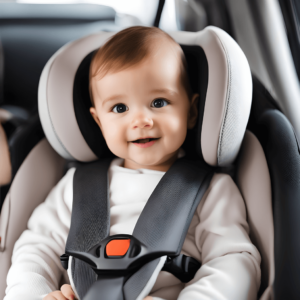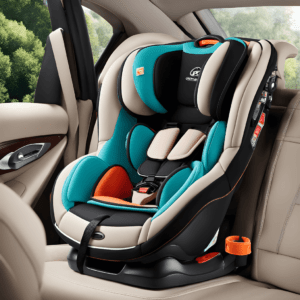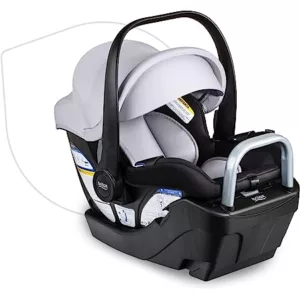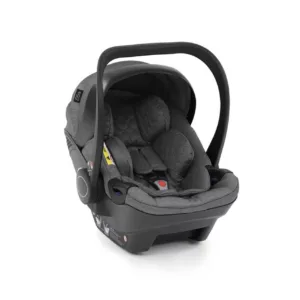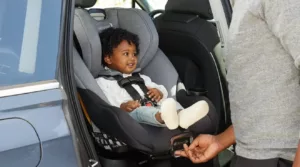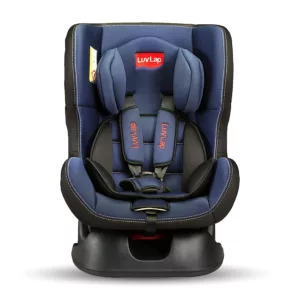How Long Can a Baby Stay in a Car Seat? Discover the crucial guidelines for determining the duration a baby can stay in a car seat during travel.
Thank you for reading this post, don't forget to subscribe!Imagine the excitement as a young family gears up for their first road trip with their newborn baby. Diapers, baby bottles, and pacifiers are carefully stowed away, filling the trunk with baby essentials. As they fasten their baby securely into the car seat, the primary question lingers: “How Long Can a Baby Stay in a Car Seat?” This question isn’t just a passing thought but a vital concern shared by countless parents worldwide. In this article, we dive into the heart of this query, exploring the need to understand car seat duration limits and offering guidance to ensure your little one’s safety and comfort while traveling.
Table of Contents
ToggleSpecific Recommendations for Car Seat Duration During Travel
Let’s dive into how long your baby can safely remain in a car seat during travel. These recommendations provide a crucial framework for balancing comfort and safety throughout the journey. By understanding these guidelines, you’ll be better equipped to plan your trips and ensure your little one’s well-being.
Table of Contents
Infants (Newborns to Approximately 2 Years) - How Long Can a Baby stay in a Car Seat?
For infants, particularly those under two years old, the recommendation is to limit continuous time spent in a car seat. Ideally, keep car trips with infants to no more than 1-2 hours at a stretch. Frequent breaks are essential during longer journeys.
Toddlers (Approximately 2 to 4 Years) - How Long Can a Baby Stay in a Car Seat?
Toddlers can tolerate longer periods in car seats than infants, but taking breaks is still important. Aim for car trips of no more than 2-3 hours at a time for toddlers, with breaks every hour to allow them to stretch, snack, and use the restroom if needed.
Older Children (Approximately 4 Years and Up) - How Long Can a Baby Stay in a Car Seat?
As children grow and transition to booster seats, their ability to tolerate longer car trips increases. Depending on their age, comfort, and individual needs, they can typically handle journeys of 3-4 hours or longer. Nevertheless, regular breaks remain essential for their comfort and safety.
General Tips - How Long Can a Baby Stay in a Car Seat?
Regardless of age, it’s crucial to prioritize safety and comfort during car travel. Ensure the car seat is correctly installed, and your baby is fastened securely.
- Frequent breaks during longer trips are essential for the child’s physical well-being and the driver’s alertness.
- During breaks, take the opportunity to feed, change diapers, and allow your child to move around a bit.
- If you have a long journey ahead, plan your travel schedule to include longer breaks or overnight stops to ensure everyone’s well-being.
Remember that these are general guidelines, and individual tolerance can vary. Always pay attention to your baby’s cues; if they become fussy or uncomfortable, make stops as needed. Safety should be the top priority when determining how long a baby can stay in a car seat during travel.
Developmental Considerations - Duration of Staying in a Car Seat
While age-based guidelines provide a useful framework for understanding how long a baby can stay in a car seat during travel, it’s equally important to consider developmental factors, comfort, and individual physical needs. Babies may exhibit varying levels of tolerance for prolonged periods in a car seat as they grow and develop. Here, we investigate into these critical developmental considerations:
1. Developmental Stage
2. Comfort and Physical Needs
3. Individual Differences
1. Developmental Stage - How Long Can a Baby Stay in a Car Seat?
A child’s developmental stage significantly affects how long they can comfortably stay in a car seat. For example:
- Newborns and Infants:
Newborns and very young infants typically have limited neck and head control. They may become fatigued more quickly when seated in a car seat, even for short durations. It’s essential to monitor their positioning and head support to prevent slumping, which can impact their airway and breathing.
- Toddlers:
As children grow and reach the toddler stage, their neck muscles strengthen, allowing for better head control. This improved neck control can lead to increased comfort and a longer tolerance for being in a car seat. However, even toddlers benefit from regular breaks during longer trips.
- Preschoolers and Older Children:
As children develop, their ability to sit comfortably in a car seat for extended periods improves. Preschoolers and older children can generally tolerate longer trips without experiencing significant discomfort.
2. Comfort and Physical Needs - How Long Can a Baby Stay in a Car Seat?
Babies have varying comfort levels in car seats. Some may find the snug confines of the car seat soothing and sleep soundly during car rides, while others may become fussy or restless more quickly. Being attuned to your baby’s signals is crucial. If they appear uncomfortable, need a diaper change, or are hungry, it’s best to pull over, address their needs, and allow them a break from the car seat.
3. Individual Differences - How Long Can a Baby Stay in a Car Seat?
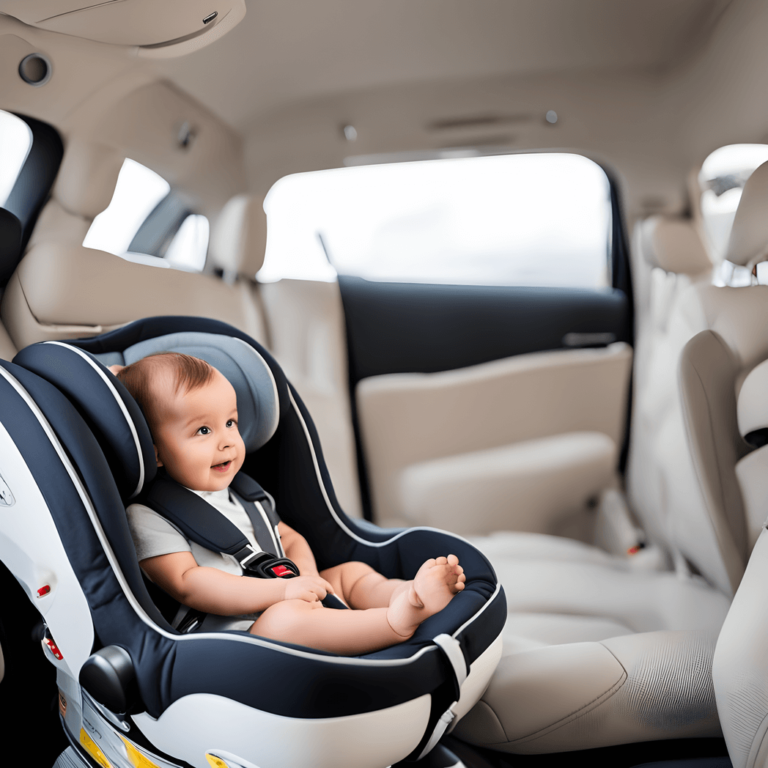
It’s crucial to recognize that each child is unique. Some babies may be more content during car rides and tolerate longer durations, while others may become agitated more quickly. As a parent or caregiver, you are in the best position to gauge your baby’s comfort and adjust your travel plans accordingly. Please pay attention to their signals and be prepared to make stops as needed.
While age-based guidelines provide a useful starting point, it’s vital to consider developmental factors, comfort, and individual needs when determining how long a baby can safely stay in a car seat during travel. Regular breaks, attentive monitoring, and responding to your baby’s cues will help ensure a safe and comfortable journey for you and your little one.
Extended Travel Strategies - Duration of Staying in a Car Seat
Setting off on an extended trip with a baby can offer rich experiences, yet it demands meticulous planning and thoughtful attention to your child’s safety and comfort. Here are practical tips and strategies to help parents navigate extended travel with a baby:
1. Plan Your Route
2. Schedule Frequent Breaks
3. Feeding Considerations
4. Diaper Changes
5. Keep Safety in Mind
6. Entertainment and Comfort
7. Stay Flexible
8. Overnight Stops
9. Stay Hydrated and Well-Rested
10. Stay Attentive
1. Plan Your Route:
Before hitting the road, carefully plan your route. Identify rest areas, service stations, or family-friendly attractions where you can take breaks.
Consider opting for routes with more frequent stops, even if they add a bit of extra travel time.
2. Schedule Frequent Breaks:
Planning for frequent breaks is the key to a successful journey with a baby. Aim to stop every 1-2 hours, even if it’s just for a short break.
During breaks, take your baby out of the car seat to allow them to stretch, move around, and play safely.
Use these breaks as an opportunity for feeding, diaper changes, and providing comfort to your baby.
3. Feeding Considerations:
If your baby is breastfed, plan for nursing breaks during stops. Ensure you have a comfortable and private space for breastfeeding.
For formula-fed babies, have pre-measured water bottles and formula ready for quick and easy feeding during breaks.
Bring snacks or finger foods suitable for your baby’s age to satisfy them between meals.
4. Diaper Changes:
Pack a well-stocked diaper bag with an ample supply of diapers, wipes, and disposable bags for easy disposal.
Use designated charging stations at rest areas or, if necessary, lay out a clean changing mat in the back of your vehicle for quick diaper changes.
5. Keep Safety in Mind:
Even during breaks, prioritize safety. Ensure your baby is securely fastened in their car seat while the vehicle is moving.
Use appropriate car seat accessories like mirrors or sunshades to keep your baby comfortable and entertained.
6. Entertainment and Comfort:
Bring age-appropriate toys, books, or other entertainment to keep your baby occupied during the journey.
Consider a portable white noise machine or soothing music to create a calming environment in the car.
7. Stay Flexible:
Be prepared for unexpected delays and disruptions, such as traffic or weather-related issues. Patience is key when traveling with a baby.
If your baby becomes fussy or uncomfortable, don’t hesitate to adjust your plans and take additional breaks as needed.
8. Overnight Stops:
For exceptionally long journeys, consider making overnight stops at family-friendly accommodations. It allows both you and your baby to get a good night’s rest before resuming your trip.
9. Stay Hydrated and Well-Rested:
Ensure you and your baby stay hydrated by having water readily available. Staying well-rested and hydrated is crucial for both the driver and passengers.
10. Stay Attentive:
Remain attentive to your baby’s cues throughout the journey. Stay ready to adjust your plans according to their comfort and requirements.
Incorporating these extended travel strategies into your journey can make long trips with your baby safer and more enjoyable for everyone involved. Remember that flexibility, planning, and prioritizing your baby’s well-being are key to a successful adventure on the road.
Exceptional Circumstances - How Long Can a Baby Stay in a Car Seat?
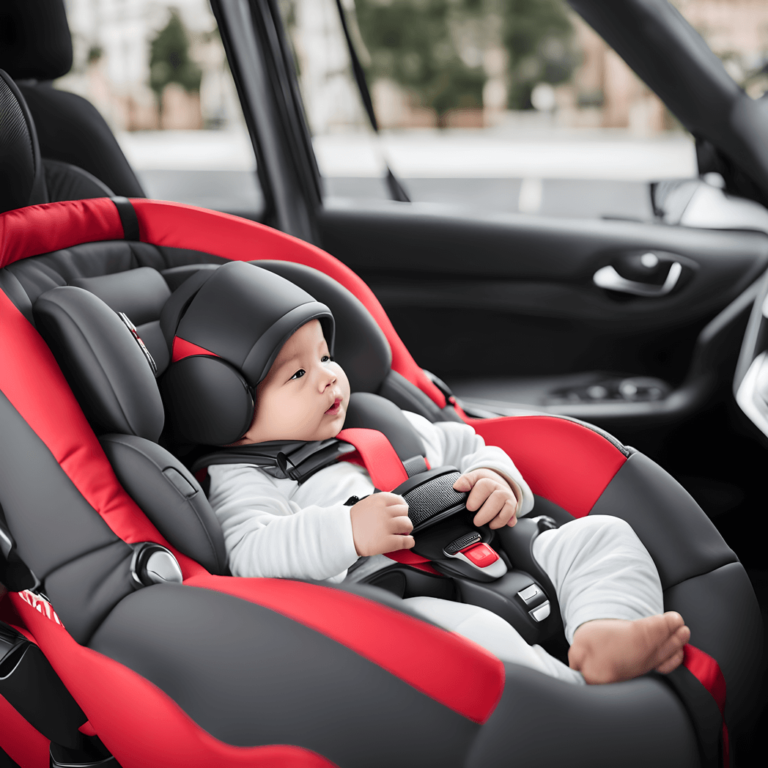
There are instances when extended car seat use becomes necessary, such as during long road trips or air travel. Parents must know how to manage the situation safely and responsibly in these exceptional circumstances. Here’s guidance on addressing such scenarios:
1. Long Road Trips
2. Flight Travel
3. Exceptional Safety Precautions
1. Long Road Trips
Plan Strategically: Plan if you’re embarking on a long road trip exceeding the recommended duration for your baby’s age and comfort level. Map out your journey, considering potential rest stops and overnight stays.
Overnight Stops: Break up the journey with overnight stops at family-friendly accommodations whenever possible. It allows your baby to rest properly and ensures you remain well-rested for safe driving.
Continuous Monitoring: Continuously monitor your baby during the trip. If they become fussy or uncomfortable, take breaks to attend to their needs and allow them to move out of the car seat.
Entertainment: Prepare entertainment options to keep your baby engaged during the ride. Bring their favorite toys, books, or soothing items to create a comfortable environment in the car.
Safety First: Always prioritize safety. Even during longer journeys, make sure your baby remains securely strapped into the car seat when the vehicle is moving. Avoid unbuckling them while the car is moving.
2. Flight Travel
Use an FAA-Approved Child Restraint: When traveling by air, it’s essential to use an FAA-approved child restraint system, such as a car seat specifically designed for air travel. Please verify with your airline to understand their particular prerequisites and regulations concerning child seats.
Secure Seating Arrangements: Ensure you have a confirmed and appropriate seating arrangement for your baby’s car seat. Some airlines may have specific rules regarding where car seats can be placed on the plane.
Plan for Takeoff and Landing: Follow the flight attendants’ instructions for securing your baby in their car seat during takeoff and landing. Be prepared for any potential turbulence by always keeping your baby fastened.
Comfort and Entertainment: Pack items to entertain your baby during the flight. Familiar toys, snacks, and comfort items can help make the journey more pleasant for you and your baby.
Check with the Airline: Before your flight, contact your airline to understand their policies regarding car seats, child restraint systems, and any additional guidelines they may have.
3. Exceptional Safety Precautions
Temperature Control: Pay attention to the temperature inside the vehicle or airplane cabin. Ensure your baby dresses appropriately for the conditions and use window shades to block direct sunlight.
Hydration and Nutrition: Keep your baby well-hydrated and nourished during extended travel. If applicable, bring an adequate supply of formula, breast milk, or baby food.
Stay Calm and Patient: Extended travel can be challenging for parents and babies. Stay calm, patient, and attentive to your baby’s needs throughout the journey.
Remember that safety remains the top priority in exceptional circumstances. While extended car seat use may be necessary during long road trips or flights, careful planning, monitoring, and adherence to safety guidelines will help ensure your baby’s safe and comfortable travel experience.
Consultation with Pediatrician - How Long Can a Baby Stay in a Car Seat?
When determining the duration a baby can safely stay in a car seat during travel, especially in cases involving babies with special medical conditions or unique needs, it’s highly advisable to consult a pediatrician or healthcare provider. Here’s why this consultation is so important:
1. Individualized Guidance
2. Special Medical Conditions
3. Expert Knowledge
4. Addressing Concerns
- Individualized Guidance:
Pediatricians are trained to provide individualized guidance based on your baby’s specific health and developmental considerations. They can assess your baby’s unique medical condition, if any, and offer recommendations tailored to their needs.
- Special Medical Conditions:
Babies with certain medical conditions, such as prematurity, low birth weight, or respiratory issues, may require special accommodations when traveling in a car seat. Pediatricians can assess the risks and benefits and provide personalized recommendations.
- Expert Knowledge:
Pediatricians possess expert knowledge about child development, including the physical and developmental stages that may impact car seat use. They can provide insights into how your baby’s development may affect their comfort and safety in a car seat.
- Addressing Concerns:
If you have concerns or questions about car seat use, your pediatrician can address them comprehensively. It includes discussing any discomfort or medical issues your baby may experience during car travel.
What Pediatricians May Say? - How Long Can a Baby Stay in a Car Seat?
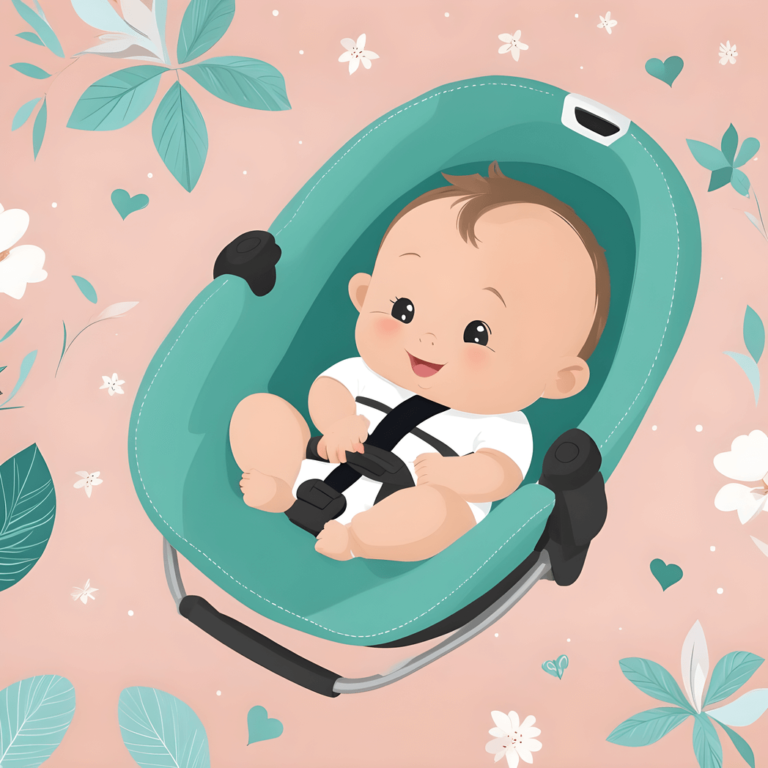
Pediatricians often emphasize the following points when it comes to car seat use and duration, especially for babies with special medical conditions:
1. Individual Assessment
2. Monitoring and Positioning
3. Frequent Breaks
4. Adaptations for Medical Conditions
5. Consideration for Air Travel
- Individual Assessment:
Pediatricians will evaluate your baby’s requirements, medical background, and current health condition to establish the most secure method for car seat usage. They may recommend specific car seat types or modifications if necessary.
- Monitoring and Positioning:
Pediatricians stress the importance of continuously monitoring your baby’s position and comfort during car travel. They may advise using additional positioning devices or cushions to ensure proper alignment.
- Frequent Breaks:
Pediatricians generally support the idea of frequent breaks, even for babies without special medical conditions. For babies with unique needs, they may recommend even more frequent stops to assess and address any discomfort.
- Adaptations for Medical Conditions:
Suppose your baby has a medical condition that affects their breathing or oxygen levels. Pediatricians may suggest specific adaptations, such as supplemental oxygen or monitoring equipment, to ensure their safety during travel.
- Consideration for Air Travel:
Pediatricians will underscore the importance of using an FAA-approved child restraint system and consulting with the airline to ensure safe seating arrangements when discussing air travel.
Consulting with your pediatrician or healthcare provider is a vital step in ensuring the safety and well-being of your baby during car travel, especially if they have special medical conditions or unique needs. Their expert guidance will help you make informed decisions and provide the best care for your baby during your journeys.
Conclusion - How Long a Baby Stay in a Car Seat?
As we reach the end of our journey through the intricacies of car seat duration for babies during travel, let’s recap the key points and emphasize the importance of finding the delicate balance between safety and comfort for your little one.
Car Seat Duration Guidelines:
We’ve explored the age-based recommendations for how long a baby can safely stay in a car seat during travel. From infants to toddlers and older children, understanding these guidelines provides a foundational understanding of what’s best for your child’s safety.
Developmental Factors and Individual Needs:
Beyond age, we’ve delved into the impact of developmental stages, comfort, and individual needs. Babies evolve, and their ability to tolerate car seats during travel changes with time. It’s crucial to pay attention to your child’s cues and adjust travel plans accordingly.
Extended Travel and Exceptional Circumstances:
We’ve provided practical strategies and precautions for those embarking on long road trips or air travel. Remember that planning, taking breaks, and adhering to safety guidelines are paramount, even in exceptional circumstances.
Consultation with Pediatrician:
Your pediatrician is your best ally when in doubt or dealing with unique medical conditions. They can offer personalized advice, address concerns, and help you make the right decisions for your baby’s safety and comfort.
Balancing Safety and Comfort:
In the world of parenting, there is no compromise when it comes to safety. Your child’s well-being is paramount, whether you’re driving across town or the country. Yet, in the quest for safety, always remember the importance of comfort. Regular breaks, attention to your baby’s needs, and a supportive car seat environment are all essential to strike that balance.
Ultimately, your journey with your baby may come with unexpected twists and turns. However, armed with the right knowledge, preparation, and care, it can transform into a safe and delightful adventure for you and your little one. Remember, your vigilant commitment to their well-being is the driving force behind every mile traveled. Safe travels!
Frequently Asked Questions - How Long Can a Baby Stay in a Car Seat?
Q1: How long can a baby safely stay in a car seat during travel?
The recommended duration varies based on age and developmental stage. For infants, aim for no more than 1-2 hours at a time. Toddlers may tolerate 2-3 hours, while older children can handle longer trips. Frequent breaks are essential.
Q2: Can I use a car seat for overnight travel on long road trips?
It’s not recommended to use a car seat for overnight sleep. Plan overnight stops at safe accommodations to ensure you and your baby get adequate rest.
Q3: What about air travel? How should I use a car seat on a plane?
Use an FAA-approved child restraint system for air travel. Consult with your airline for seating arrangements and follow flight attendants’ instructions during takeoff and landing.
Q4: My baby seems uncomfortable in the car seat. What can I do?
Ensure proper positioning and use car seat accessories as needed. Take frequent breaks to address comfort, feed, and change diapers. Your baby’s comfort is crucial.
Q5: How do I know if my baby has outgrown their car seat?
Refer to the car seat manufacturer’s guidelines. Signs may include reaching the weight or height limits, the baby’s head nearing the top of the seat, or their shoulders surpassing the harness slots.
Q6: Can I add extra padding or inserts to make the car seat more comfortable?
Only use padding and accessories approved by the car seat manufacturer. Aftermarket products may compromise safety.
Q7: What if my baby has special medical conditions?
Consult with your pediatrician for personalized advice. They can guide safe travel and accommodations for medical needs.
Q8: Is using a car seat with a premature baby or low birth weight safe?
Premature or low birth weight babies often require special accommodations. Consult your pediatrician for guidance and ensure the car seat suits their needs.
Q9: Can I use a car seat for a baby who has fallen asleep during travel?
It’s safe for your baby to nap in a car seat while the vehicle is moving. However, once the journey ends, move your baby to a safe sleeping environment, as car seats are not designed for extended sleep.
Q10: What’s the most important thing to remember about car seat use during travel?
Safety always comes first. Prioritize proper car seat use, frequent breaks, and attentive monitoring to ensure your baby’s safety and comfort during travel.
